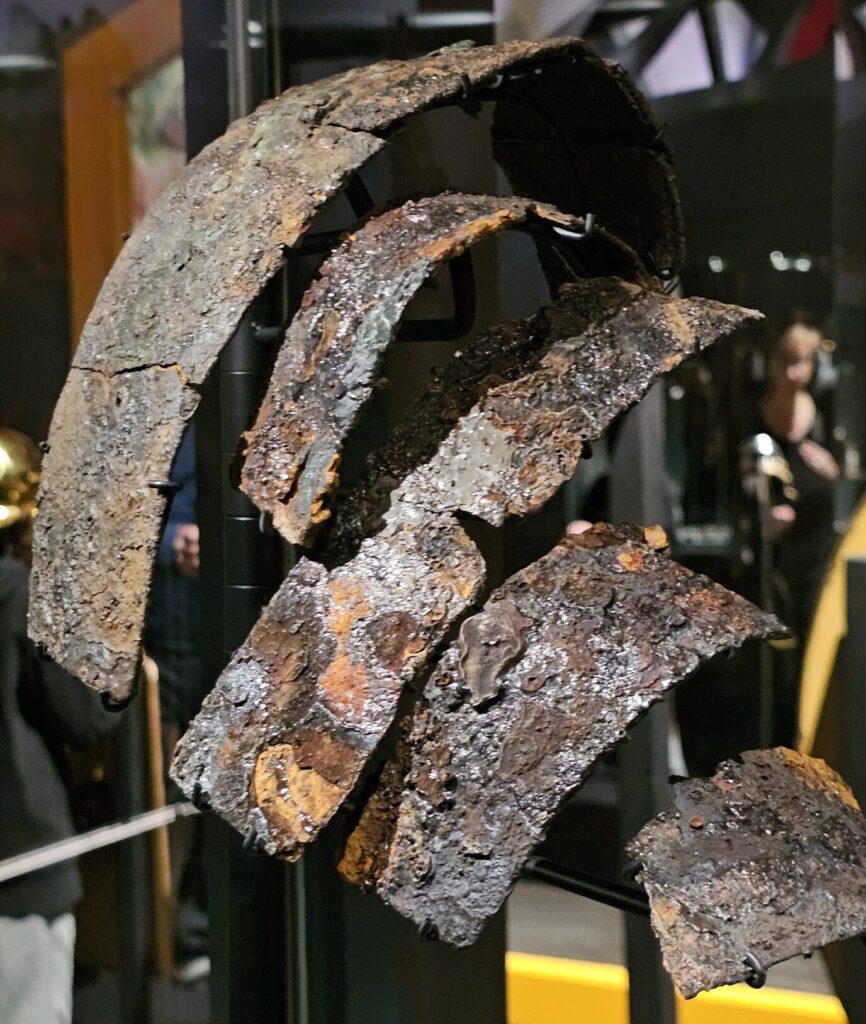Back in 2023 the British Museum announced they would have an exhibition titled ‘Legion’ which would feature a range of pieces allowing the visitor a chance to gain a glimpse at what the Roman military machine was like. It didn’t fail to deliver and wasn’t just restricted to the obvious martial elements. There were a number of very interesting objects, some I’ve included here but make sure you keep an eye out on my Instagram / TikTok as I’ll be posting images on there and discussing them. In case the links don’t work just search for ‘ancientblogger’.
Legion – some favourites.
I’ll start with a failing, the reference to a required height for a legionary is somewhat controversial. The figure cited (at least 5’7″) comes from Vegetius’ work De re militari, a treatise on the Roman army dating to the late Roman Empire. As such it’s difficult to use this as a literal yardstick for the centuries prior. In either case I didn’t quite make the height requirement but perhaps I could always have gotten some stacked heeled caligae?
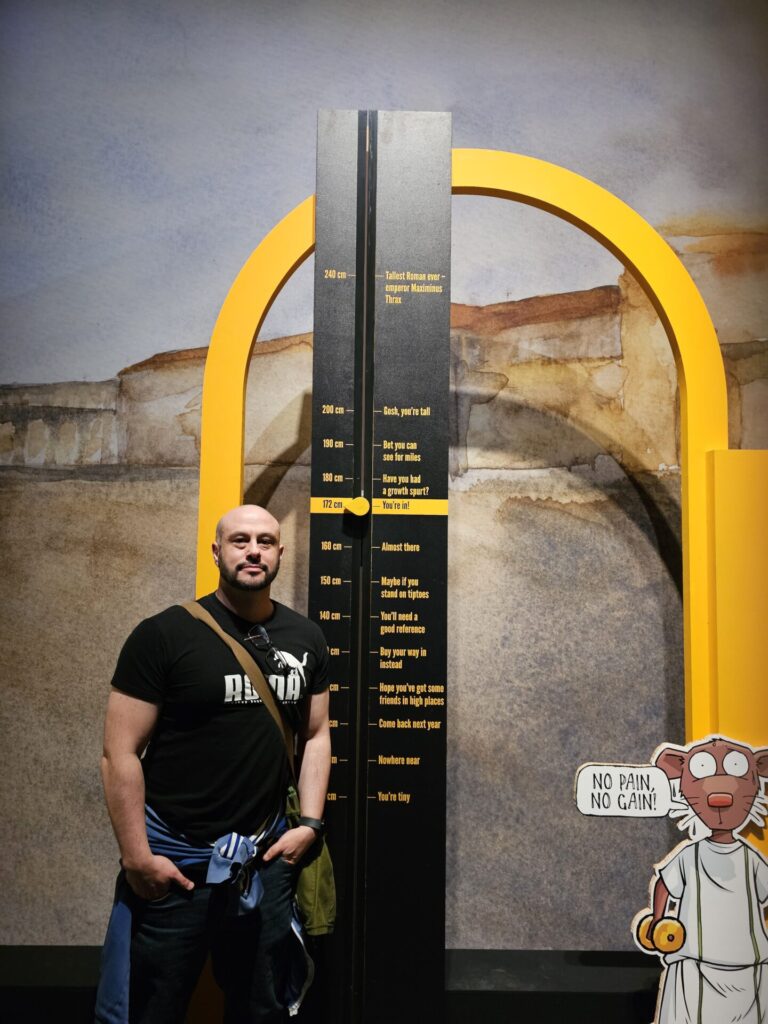
As you might expect the lives of the soldiers played an important part in the exhibition. The tombstone below belonged to Genialis Clusiodi, an imaginifier of the 7th cohort of the Raetians. He died aged 35 and you can certainly get a sense of who he was. In fact many of the tombstones which had retained their detail fostered a real sense of an individual.
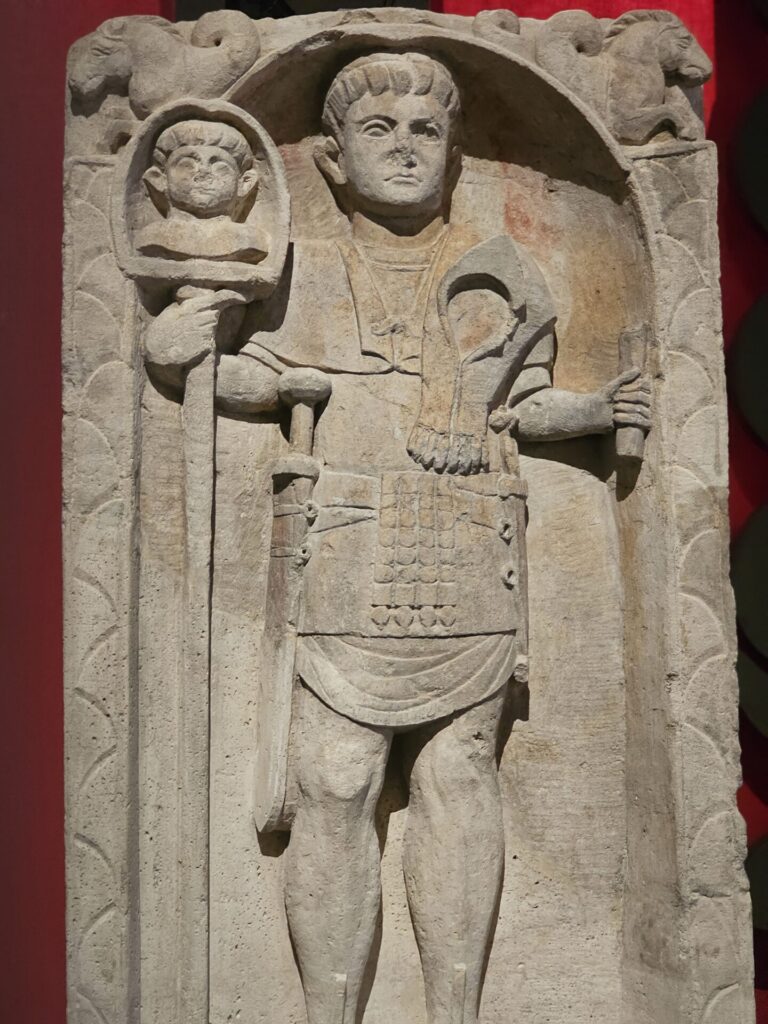
The notion of the everyday and the individual was found elsewhere. This woolen sock dates from the later Roman period (AD 200-500) and comes, not from a chilly frontier, but Egypt.

One of the standout pieces was the only surviving scutum. This has been argued as a parade shield and comes from Syria. Many years ago I did some reinactment and we had a copy of this so it was wonderful to come up close to the real thing. It’s dated to the early AD 200s but looks in better condition than mine! As you can see the detail is quite incredible.
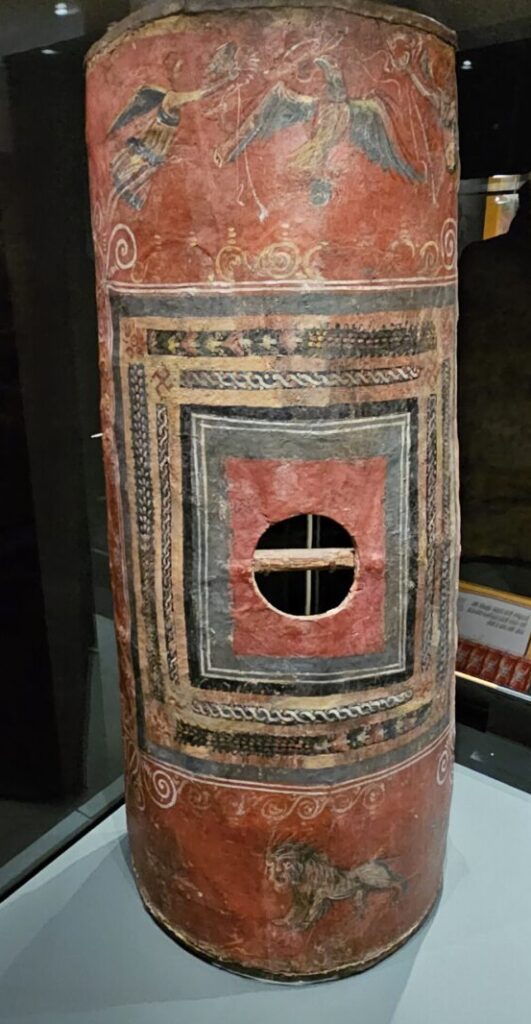

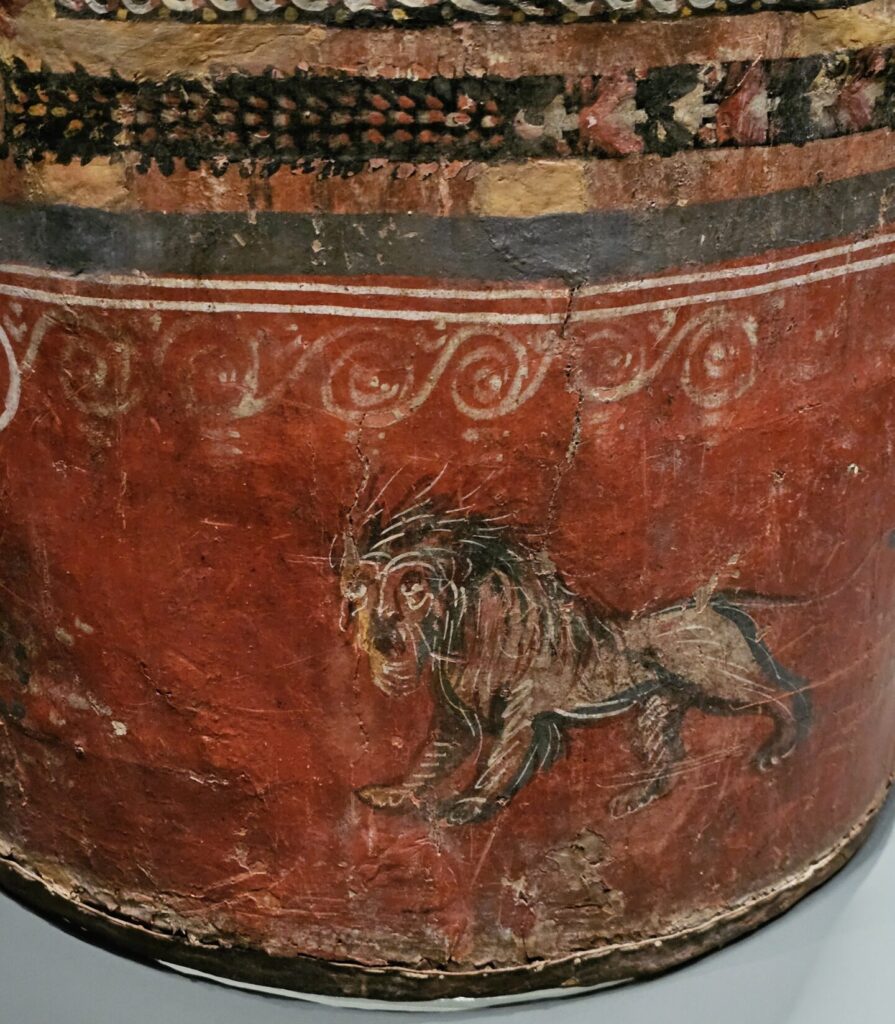
A boar atop a standard, 100 BC – AD 300.

Legion – the others.
You can easily fall foul of equating the Roman legion as just infantry. However, Rome often incorporated other units and peoples from across the empire. For example, the Sarmatian cavalry and on the topic of cavalry whatabout cataphracts? These were justly feared, the horseriders matching skill with an armoured mount.
Though these units earned their fame fighting against Rome for the likes of the Sassanids these units did feature in the Roman army later on. Here you can see one flank of the horse and a close up of those overlapping scales.
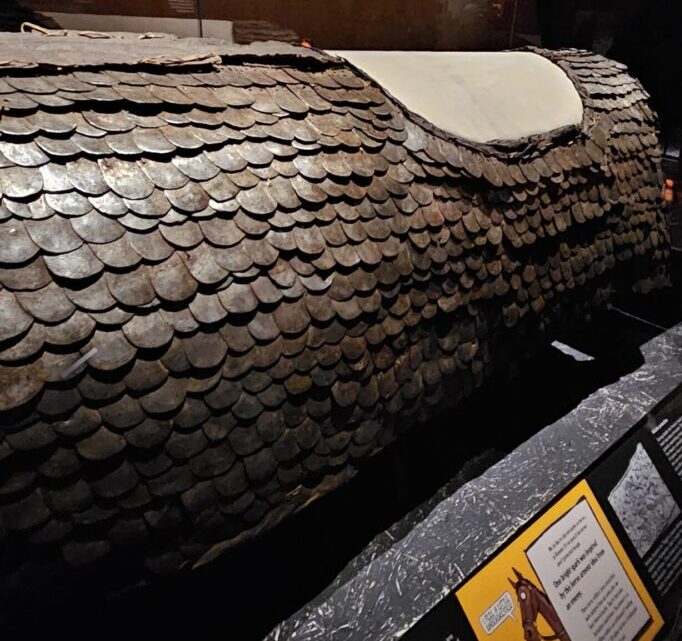
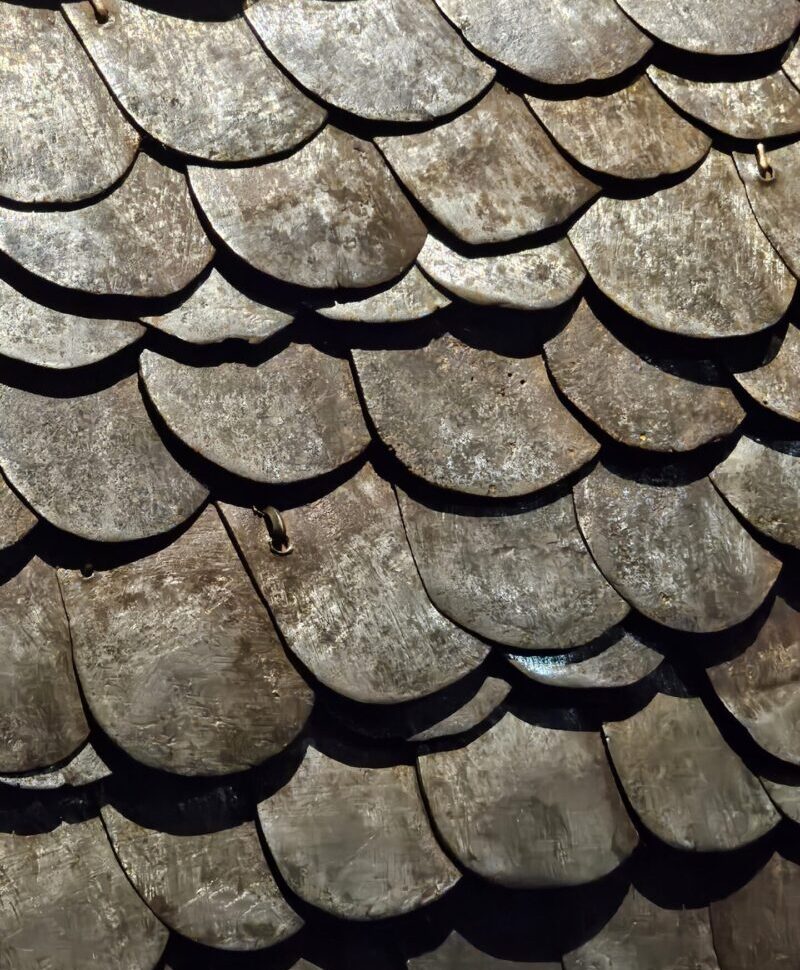
Cataphracts weren’t the only unit from the eastern fringes of the Roman empire. This is a tombstone of a Syrian archer, possibly the 1st Hamian Cohort and stationed on Hadrian’s Wall. The tombstone has lost some detail, but what can be made out from it feels distinct from the depiction of a legionary. You can even make out what looks like a quiver and on that item there was a surviving leather quiver from Birdoswald fort, Cumbria. This dates from AD 122 anytime till AD 410, but the imprecise date range can be put to one side as it’s a fantastic piece (and it’s done well to survive.
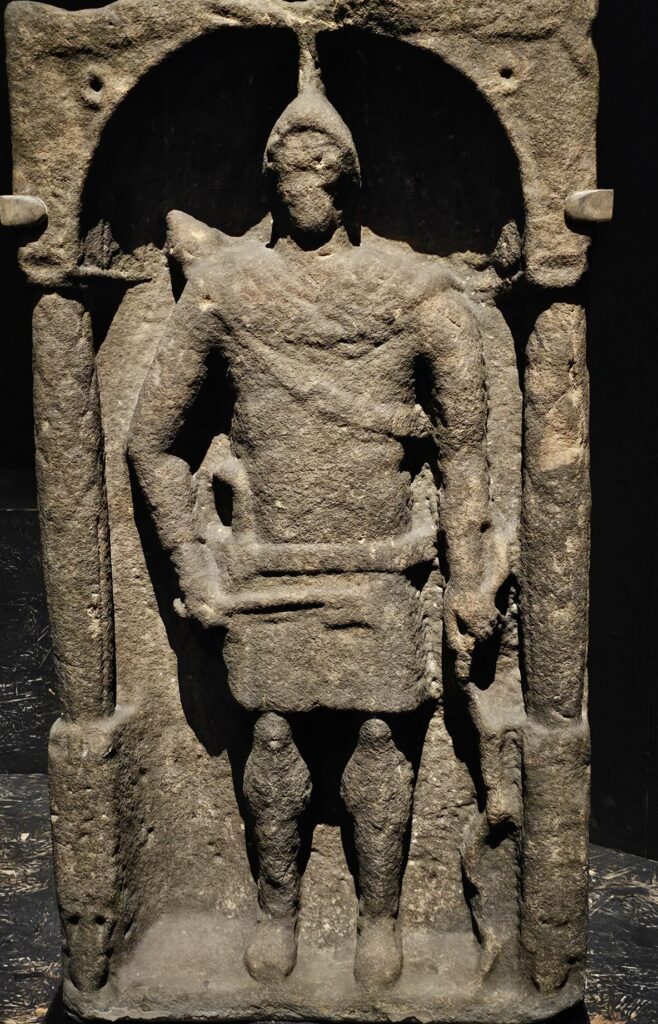

Legionary armour.
The exhibition featured two pieces of armour, lorica segmentata from Kalkriese (Germany) dating to AD9 and the famous Corbridge segmentata (dating to AD 122-138). The earlier armour has a grisly backstory it being connected with the Teutoburg massacre in AD9.
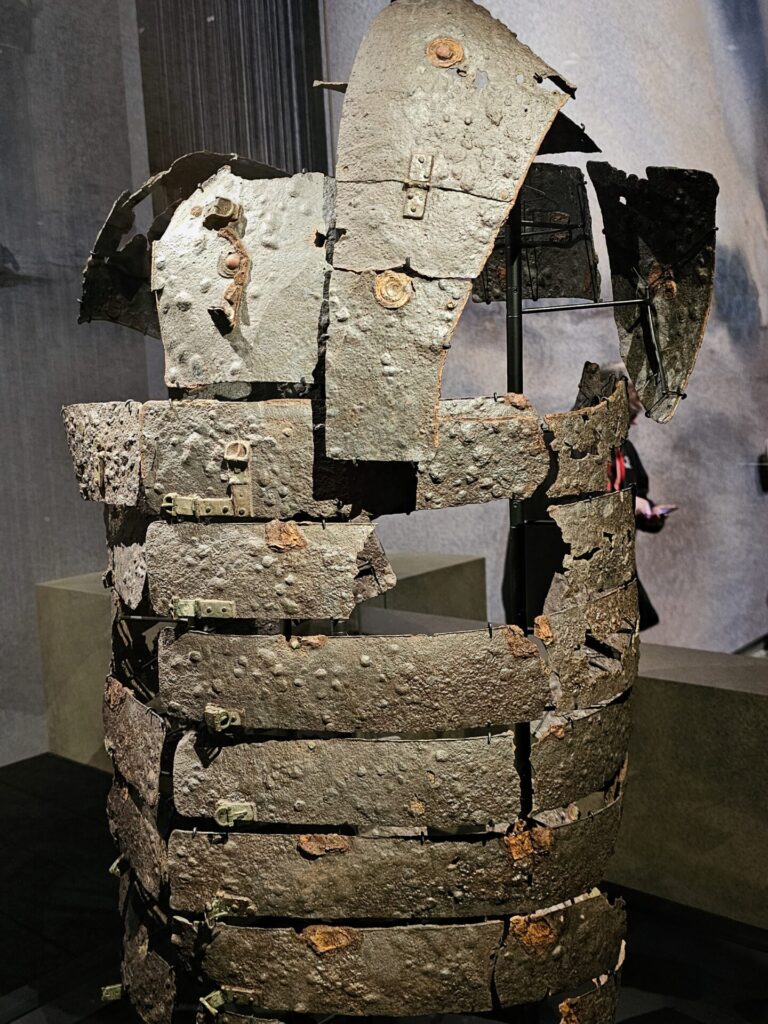
The later lorica is part of the Corbridge Hoard from the UK. There’s less of it but still impressive and any finds of this type are incredibly rare, what you can see below is a section of the shoulder piece.
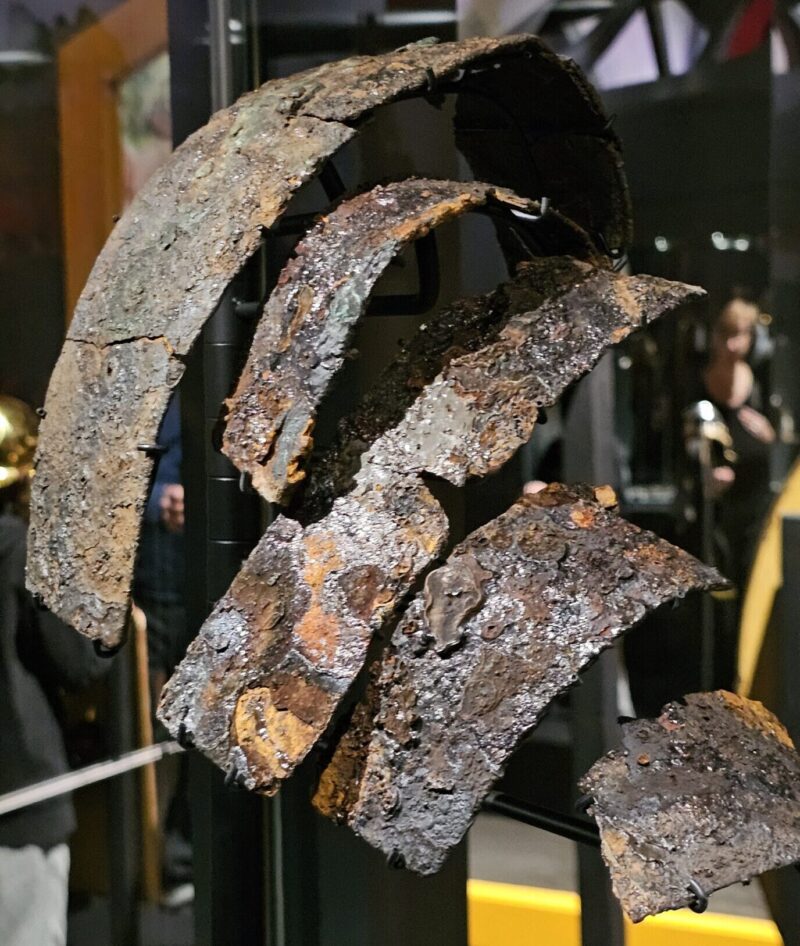
It wasn’t just body armour, a manica (or armguard) made an appearance. This has only recently been put together, consisting of 100 individual pieces and now the most intact specimen. This took equal parts patience and skill to reassemble.
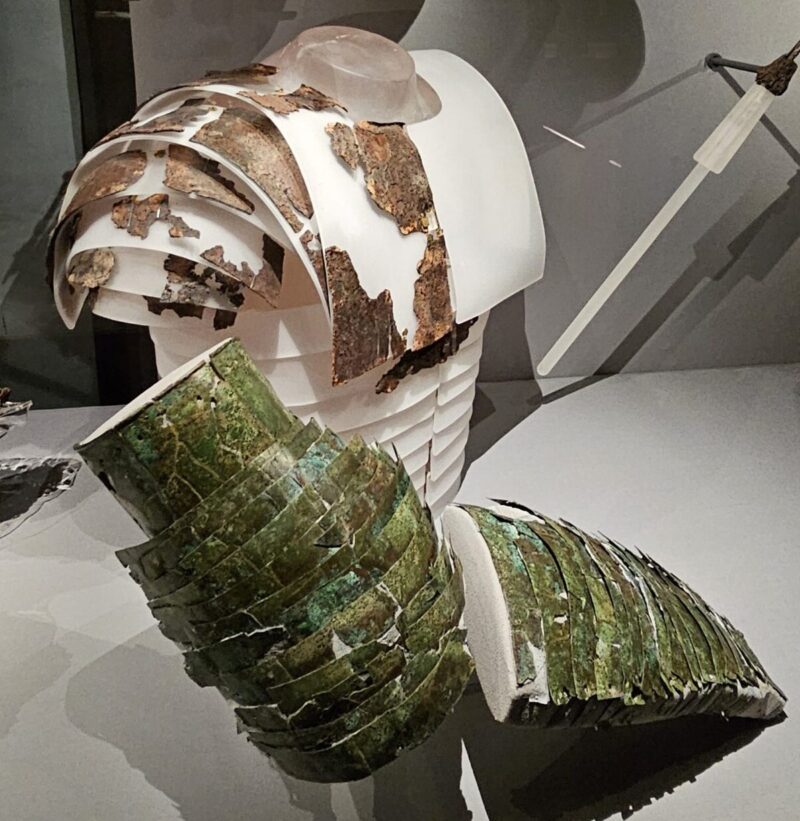
Overall this is an excellent exhibition and I’d recommend it. In total I took over 500 photos (this includes those taken in the museum as well). I’ll be putting them up here in articles but also, as mentioned, on my TikTok and Instagram in case you are interested.

